In this post, I’ll talk about the Hastings Caves themselves, and the Hot Springs Pool walks. In my previous post (see here) I discussed the general travel and food considerations for this location.
Arriving at the Caves Visitors Centre
The Caves Visitors Centre is a few kilometres past Hastings, and a bit further inland in the heart of Tasmanian rainforest. Look for the sign once you’re passed Hastings. The Tours run hourly and take practically all of that hour. They do cost, but for your money you do get a fully guided walk through of the caves with guides who definitely knew their stuff. The entry fees pay for maintenance and upkeep and all the usual stuff as well, so I didn’t think it was unreasonable. The entry fee also includes unlimited access to the two walking tracks, the thermal pool swimming area, and the barbeque and picnic area. You can pay just for access to the thermal pool and walking track area (without the Caves tour) if you wish.
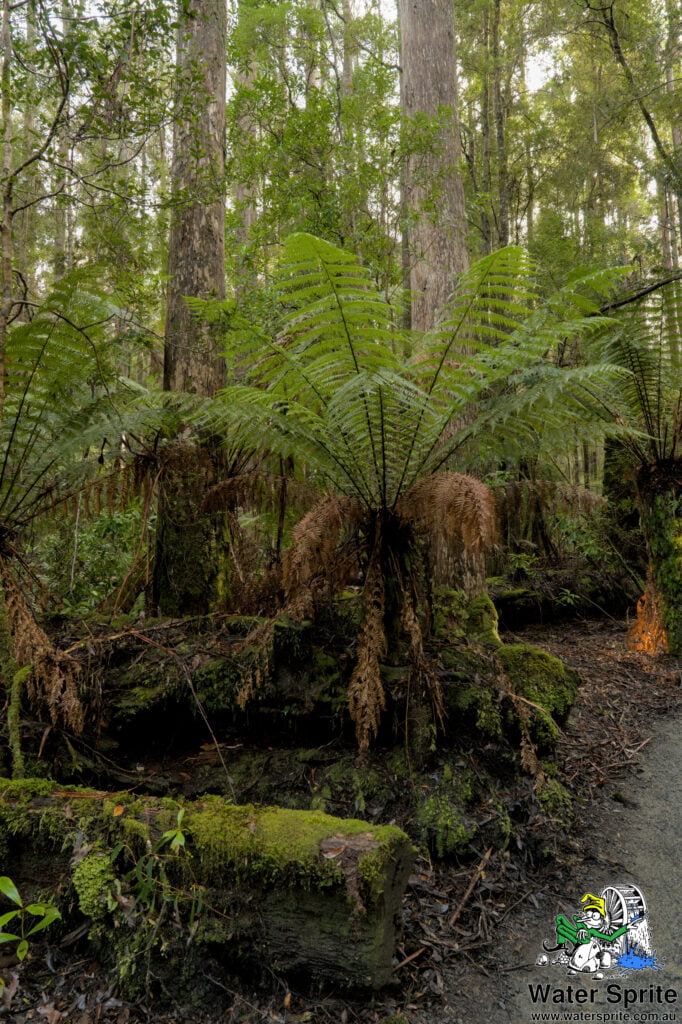
Being the middle of winter, I was expecting it to be very quiet at the Caves, so I didn’t pre-book. We were there in time for the first tour of the day, and I was a bit surprised to find that there was a group of more than 20 people for the Cave tour. We still managed to get on the first tour, but it was cutting it a bit fine. With a group that size, I gather the tour guides will often split the group in two once in the caves so everyone gets a good opportunity to see and photograph everything. That’s certainly what they did for our tour.
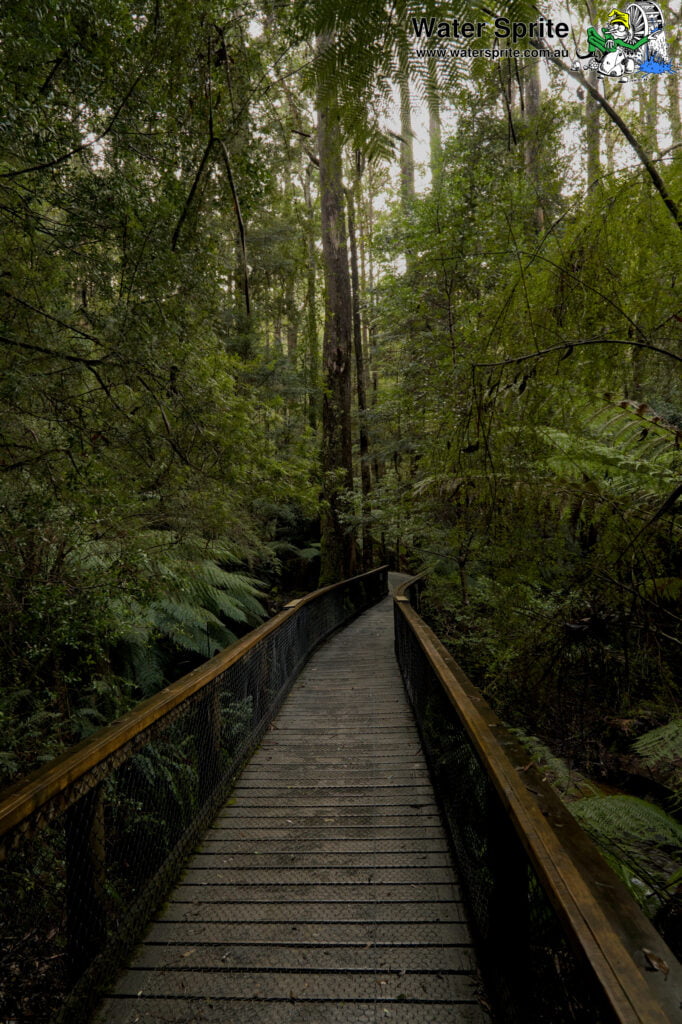
You do need to be aware that the Caves entrance is a further drive from the Visitors Centre, followed by a walk along a path and up steps to the entrance to the cave. It is a pretty walk through old rainforest, so you’d be well advised to allow yourself a bit extra time to enjoy the walk and appreciate it. With that in mind, you do need to leave plenty of time to get from the Visitors Centre to the entrance, as judging by the operation on the day we were there you will not be able to get access to the cave if you miss the start of your tour. Also be aware that there are steps in the cave. Lots of steps. It is not possible to do this tour without going down and up lots of steps.
The Caves
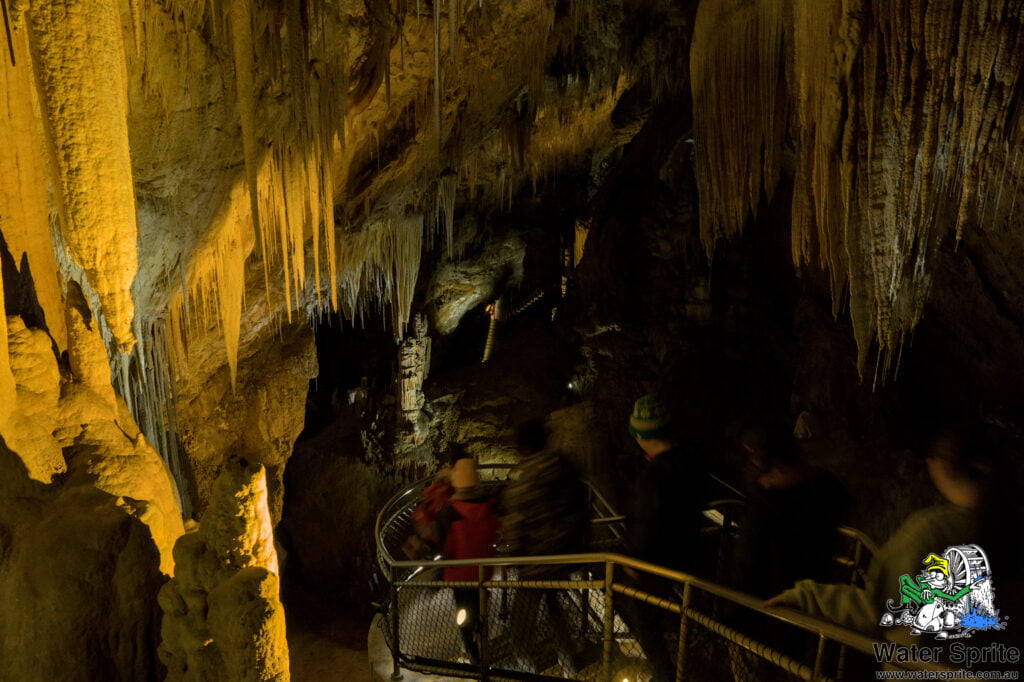
Of the caves themselves, I don’t have much to say. Access is quite easy, apart from requiring the use of well-formed steps and a few locations that pose head-height threats to people over 5 ft in height. The caves are well lit with centrally controlled electric lighting. They are damp, but were not excessively wet, and there did not appear to be much indication that it ever got that much wetter. From information given during the tour and online, I gather that this cave is the largest dolomite tourist cave in Australia. Most tourist caves in Australia are limestone caves. Limestone dissolves in a weaker acid solution than dolomite, which may make dolomite caves slower to form, at a guess? Or at least, requires more specific conditions to form.
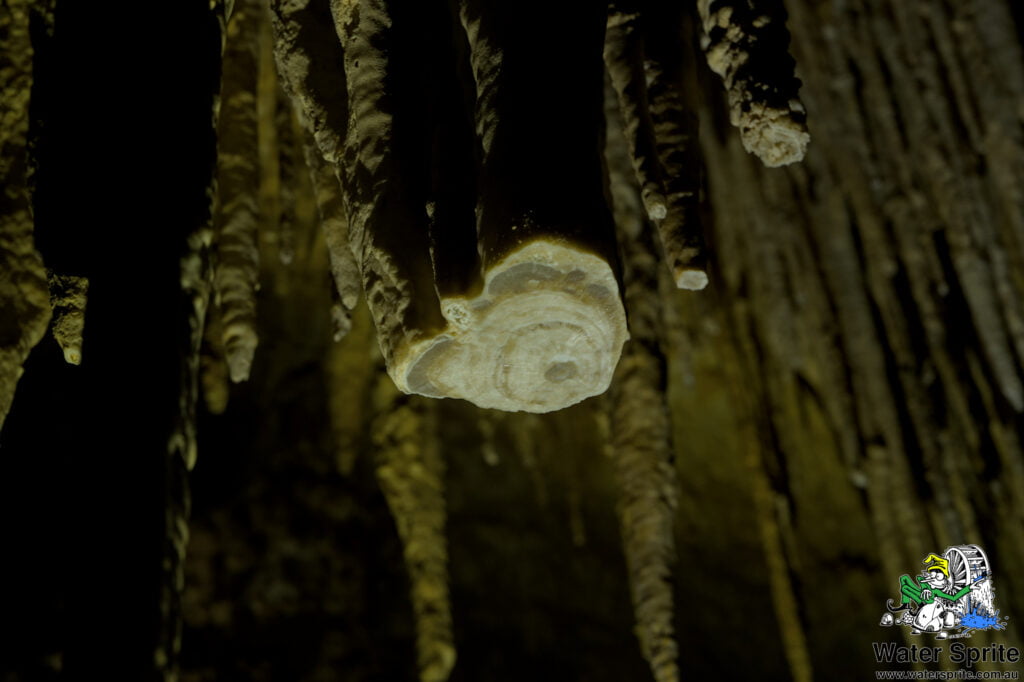
In any case, the information says that this cave system itself was initially formed some 40 million years ago. It has presumably been bumped around and shifted a few times as the earth’s crust has moved in the interim. I have found nothing to suggest how long it has taken for the various formations in the cave to form, but there won’t have been much significant crust movement for at least the last few 10,000 years, so I would guess these formations have taken at least 20,000 years to form, and possibly much longer. As usual, though, don’t take my word for it – I have next to no geology knowledge and I could be utterly wrong in my guesses.
Colours
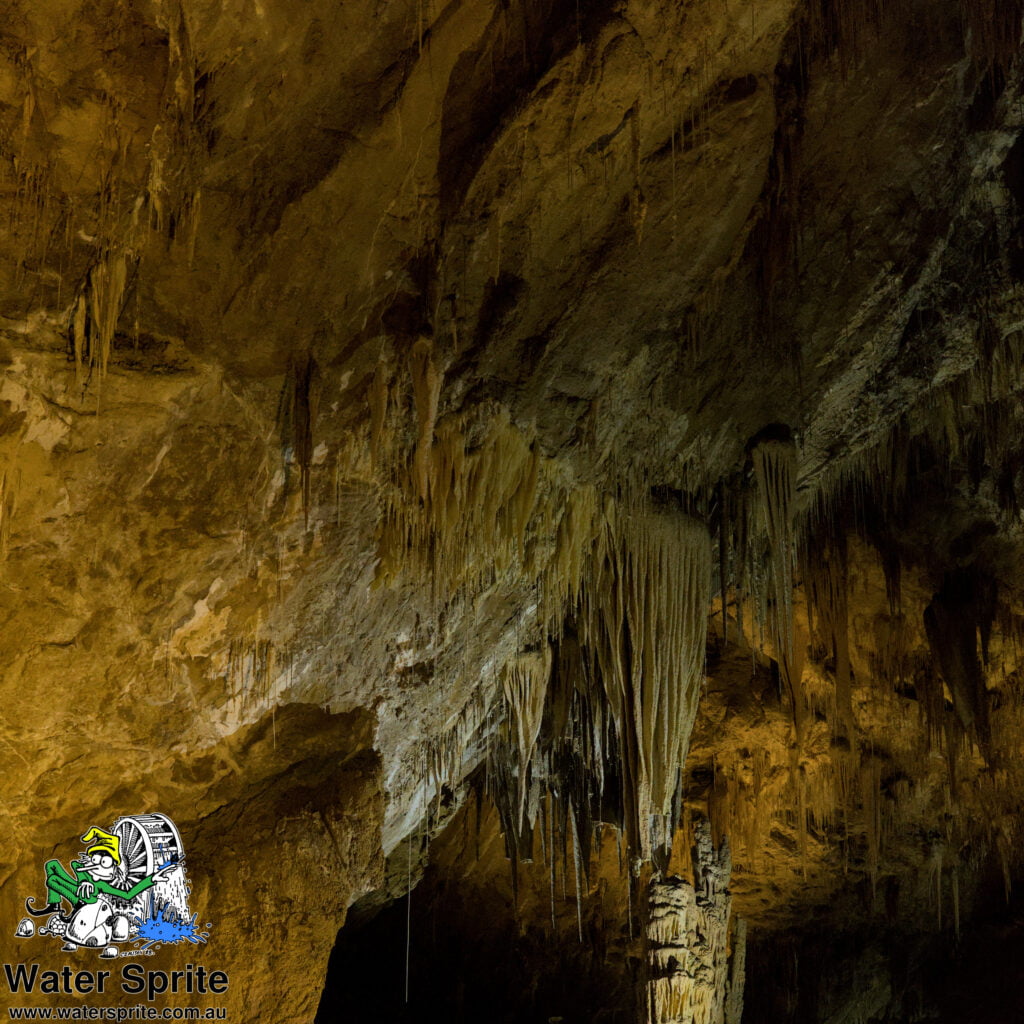
The caves are a mix of orange and white formations, with a few greys thrown in for good measure. The different colours in the formations are the result of a few different factors. In many parts of this area of Tasmania, the rivers are brown in colour because of the level of tanins in the water – water falls of the forest floor and percolates through thick layers of organic materials before making it to the river. As the water travels through the organic material, it absorbs tanins (the same stuff that makes tea – the drink – brown). If that water eventually makes its way into the cave system, the formation that results is an orange-brown colour (depending on the level of tanins in the water). The white formations, on the other hand, have formed where the water making it into the cave system has not had this contact with the organic materials.
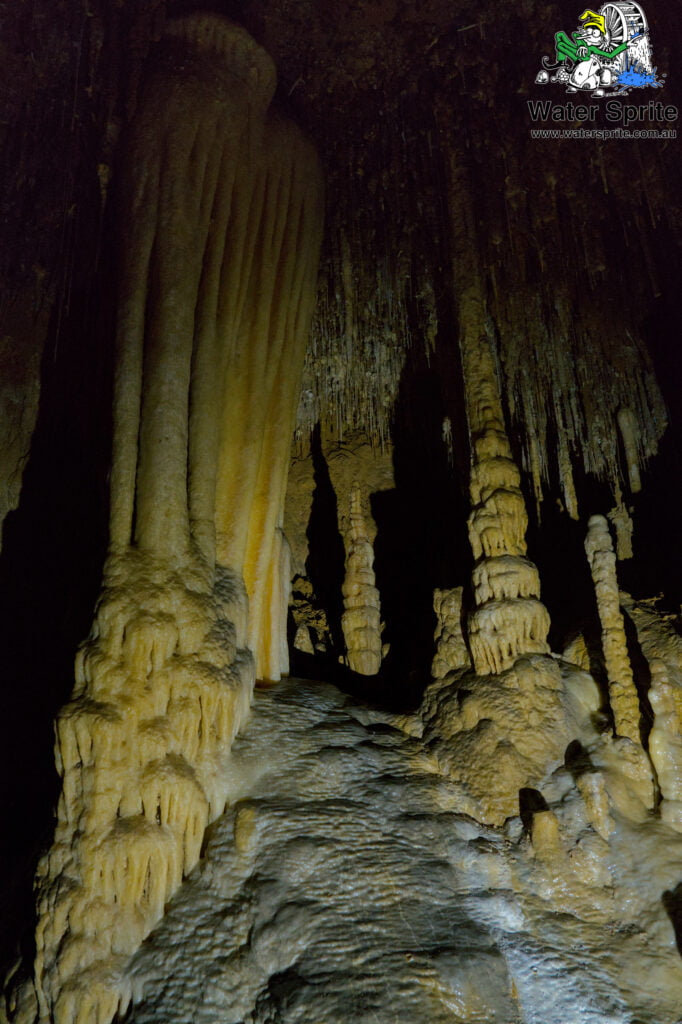
The greys that appear in various places may have different causes. We were told in the tour that they were the result of bushfire smoke that made its way into the caves during bushfire events in the far past. Bushfire events are very rare in this part of the world, and the 2019 fires did not get anywhere near the caves. The major fire disaster in 1967 did burn close enough for smoke to have made it into the caves, but that is the only fire event I have found documented that burnt near the caves in the last 100 years.
I have issues with that explanation because the locations of the grey formations are interspersed with formations of other colours and many of them at least appeared to be still actively forming. This would seem to suggest that there would be a single very thin layer of grey from a smoke event that would then be overlaid by subsequently forming layers. I would also expect the grey layer to be fairly uniformly spread through the cave system. Neither of these things seem to be what is happening. I don’t know anything about this, but based on the statement that the grey is the result of bushfires, I would expect it would be more likely the colouring would come from water that has made its way into the cave through a layer of ash or charcoal that was left on the forest floor after a bushfire event rather than from smoke entering the cave. However, I repeat that I know nothing about these processes and this is pure conjecture on my part.
The walks from the visitors centre
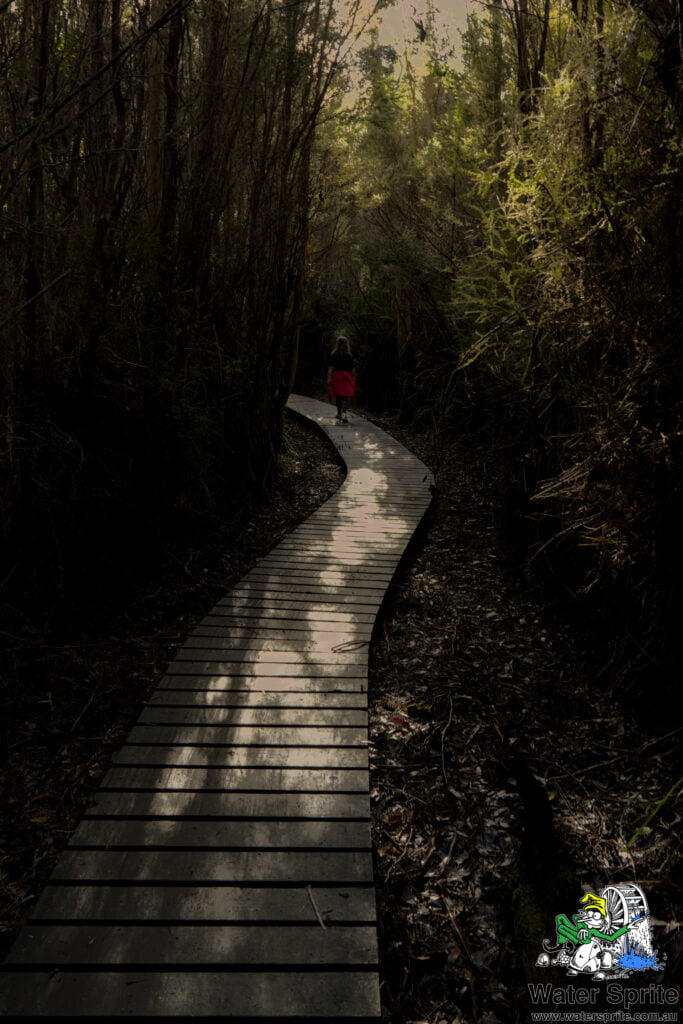
There are 2 walks from the visitors centre (or more specifically, from the thermal pools). However, if you do the longer walk – the Thermal Springs Walk, you cover all but about 20m of the short walk, the Platypus Trail. The Platypus Trail is well made and well maintained for its entire length, and would be suitable for walkers of any ability or age. It may even have been wheelchair suitable, but I wasn’t really paying attention for that so I could be wrong.
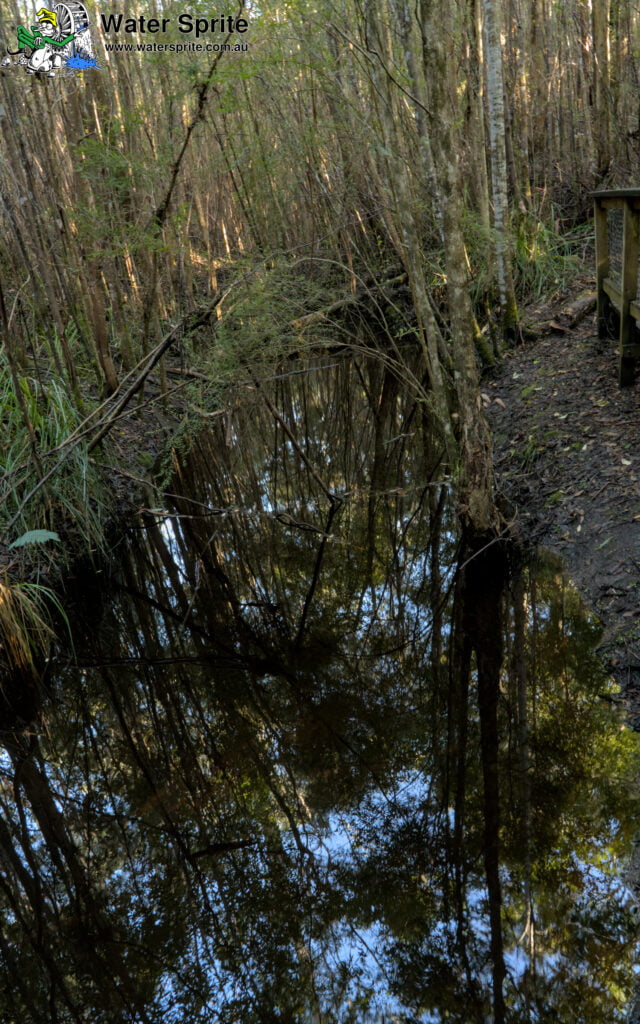
The Thermal Springs Walk has sections that are narrower dirt track, but it is still essentially level and flat. I don’t recall if there were steps there, but if there were, they were occasional only. It isn’t as well groomed as the Platypus Trail, and when we were there a tree had fallen down at one point and largely blocked the path. It was possible to get past, and we did, but it did require pushing through branches. There are sections of boardwalk and a few bridges along this section too. The Hot Sprigs Walk did a good job of showing off the different ecological communities that occur around the area. It broadly follows the streams that flow through the area, including one stream that is quite warm to touch, which gives the area its naturally warm water for the thermal pool. Interesting if you’d like a bit of a stroll through the bush. We found it quite peaceful, with a variety of tree and fungi subjects to photograph.












Disclaimer
We were full fee-paying visitors to the Hastings Caves and Thermal Springs Reserve. We did not advise the management of our visit at any time before, during or after our visit and received no sponsorship or reward for producing this post. This post has not been reviewed or endorsed by the management of the Reserve. Any information in this post is gleaned from my own research and observation, and my recollection of the information provided during the tour. Any opinions expressed are entirely my own.
Website:
Leave a Reply